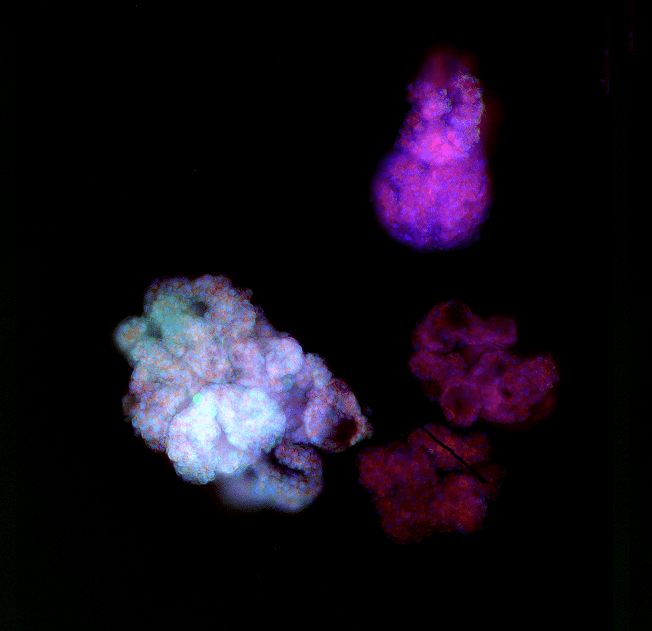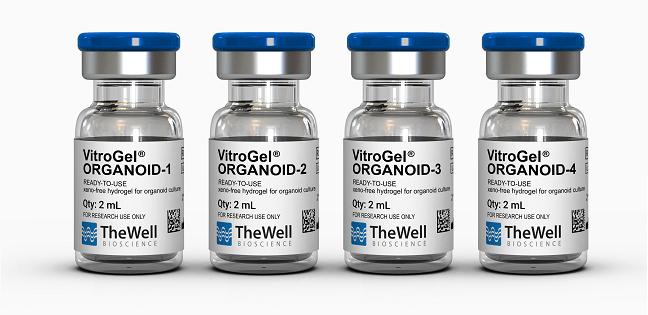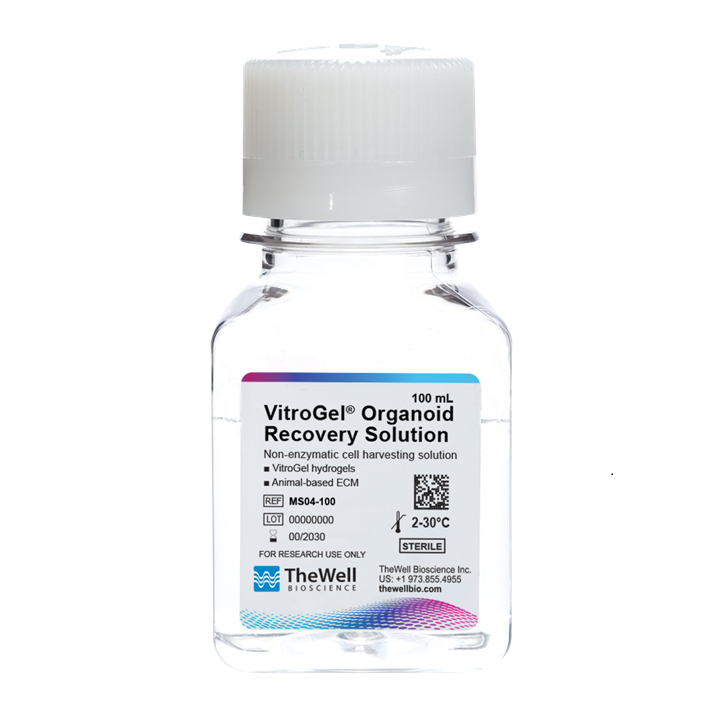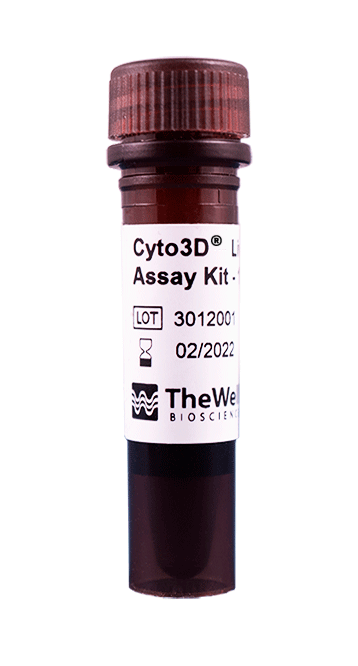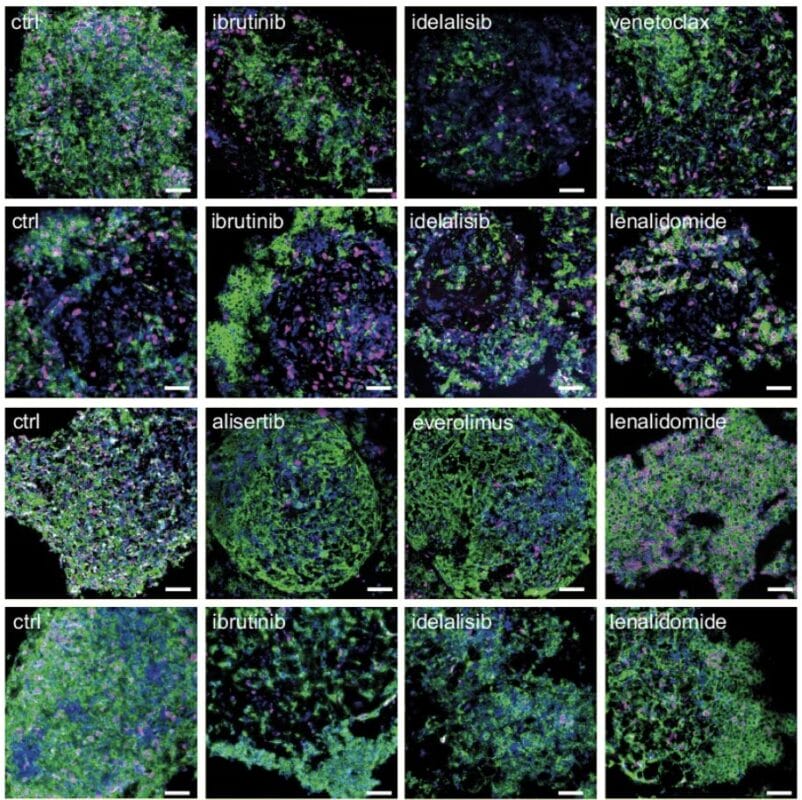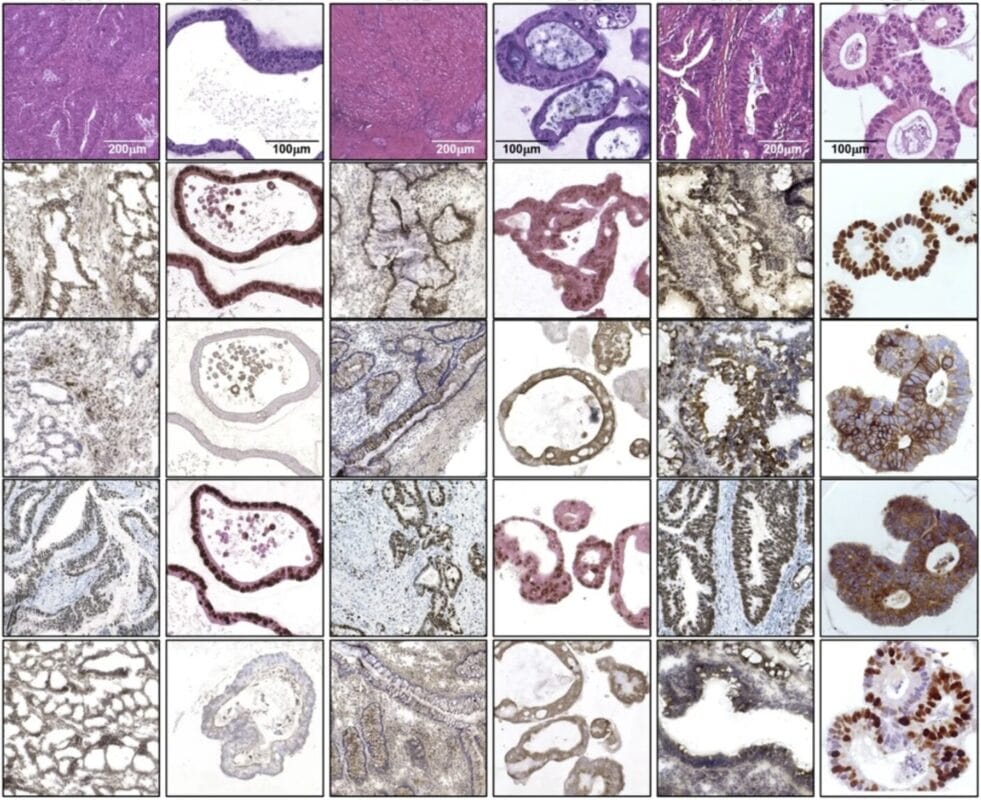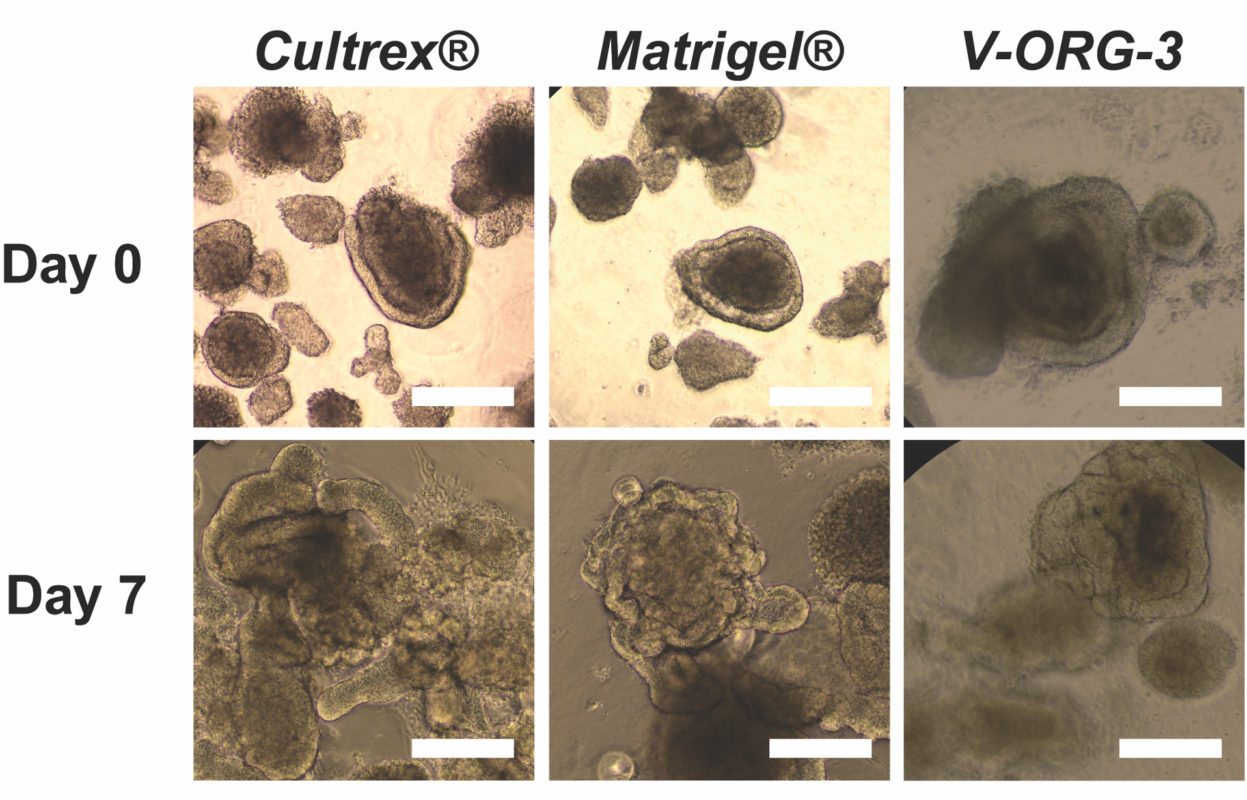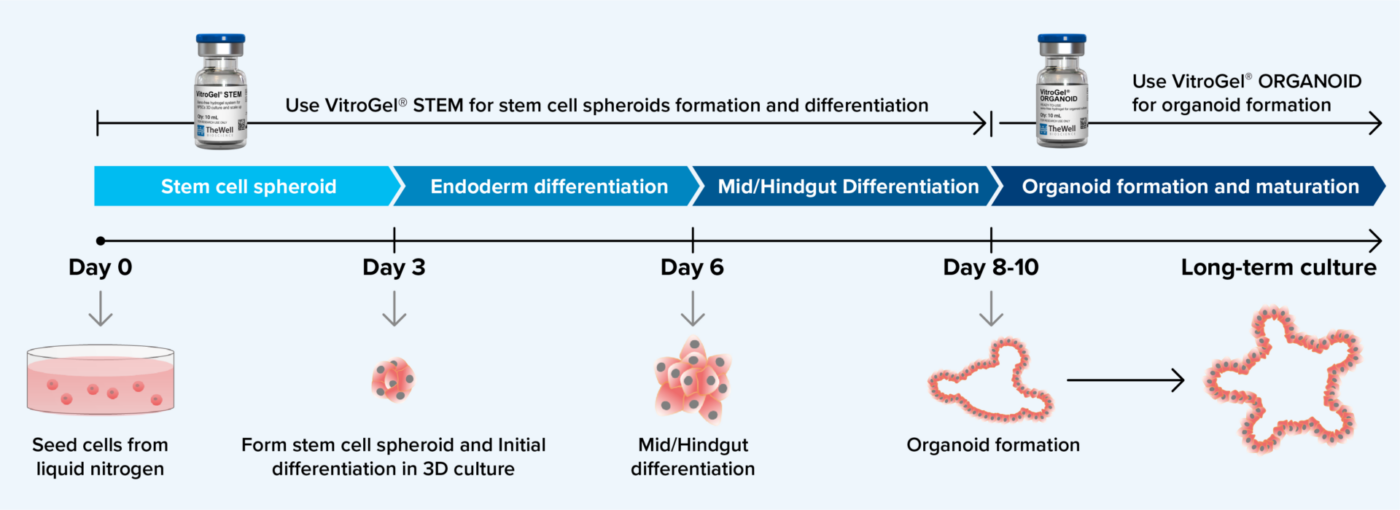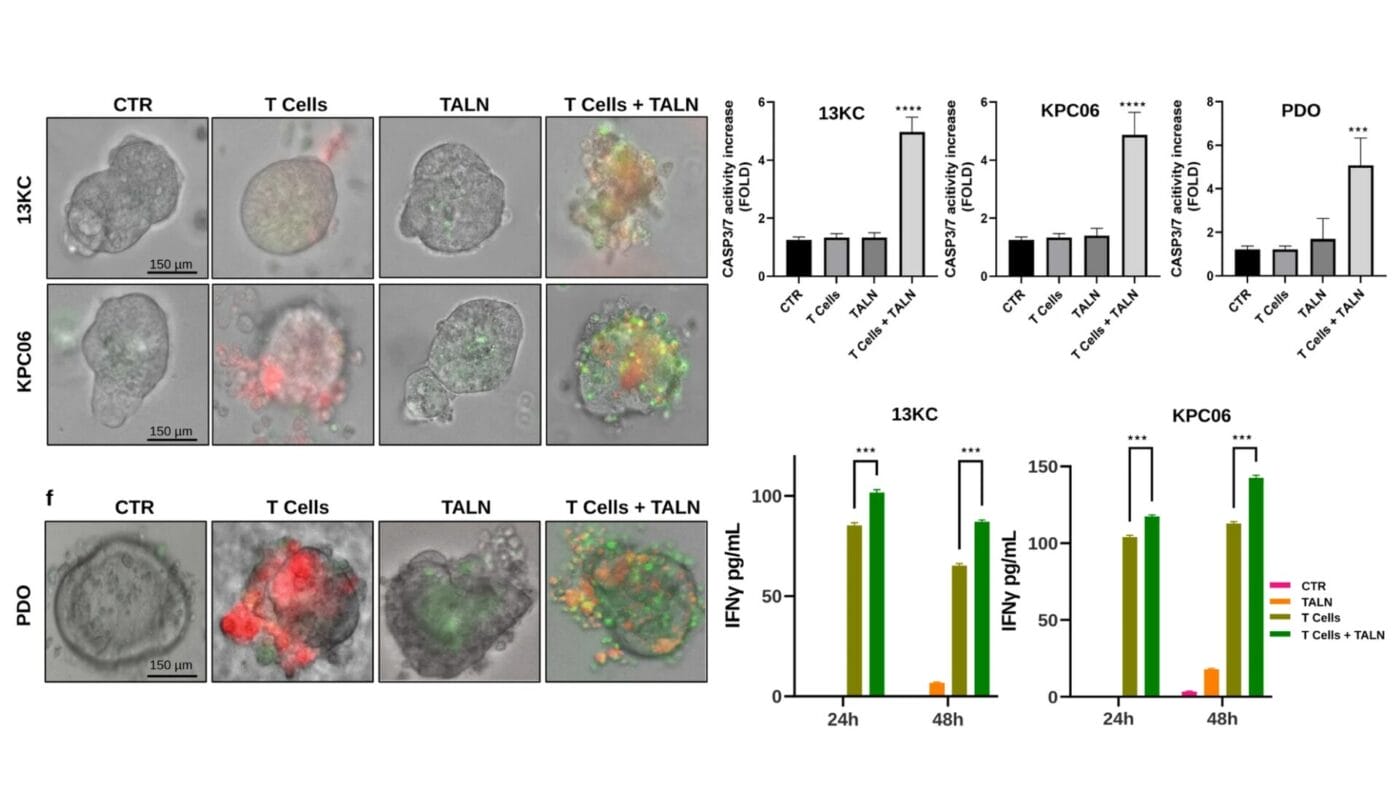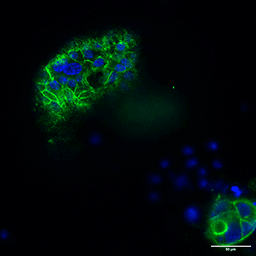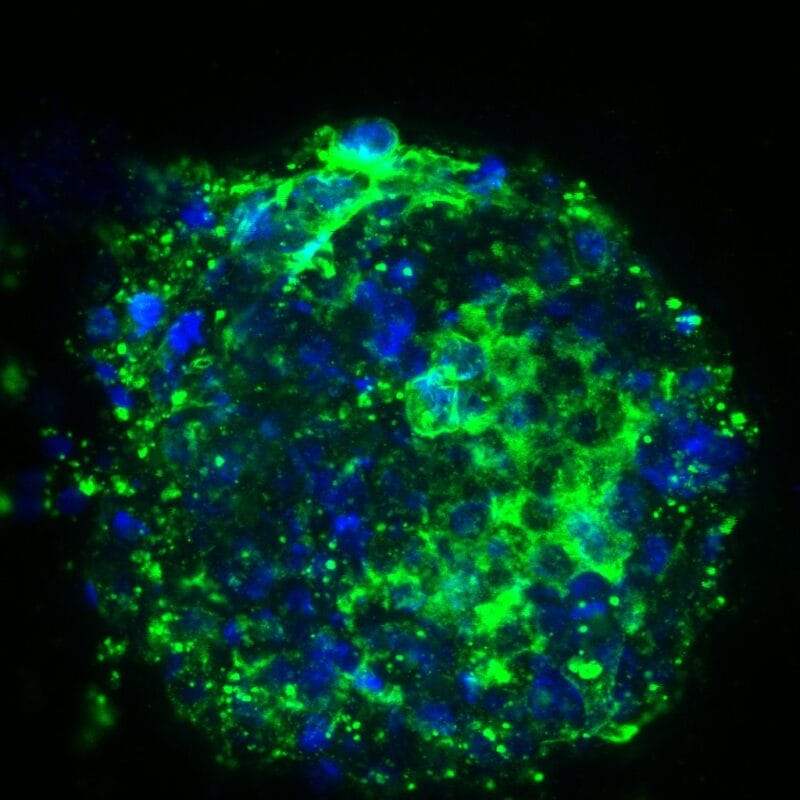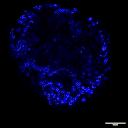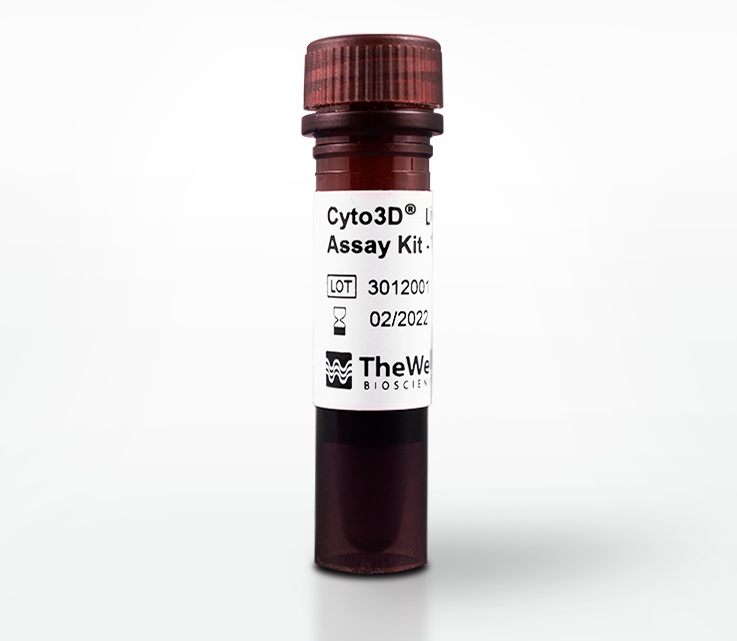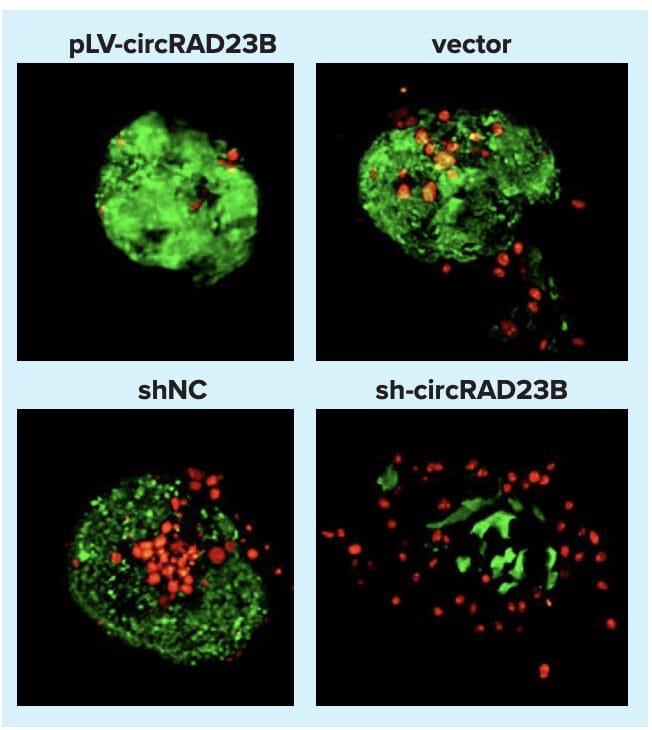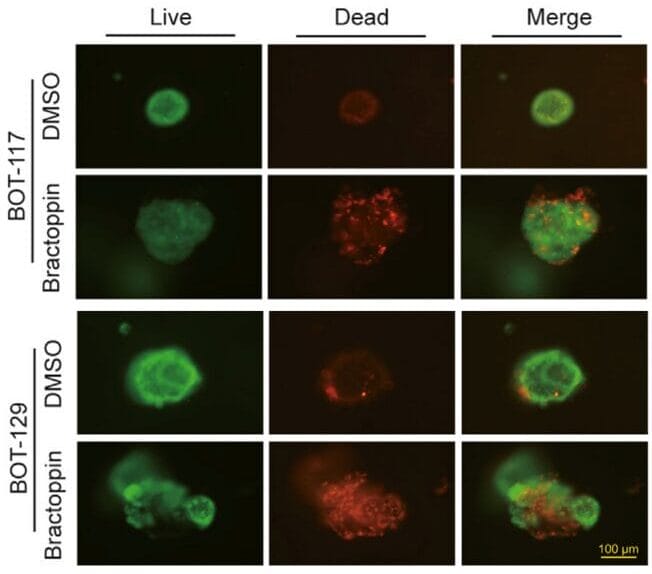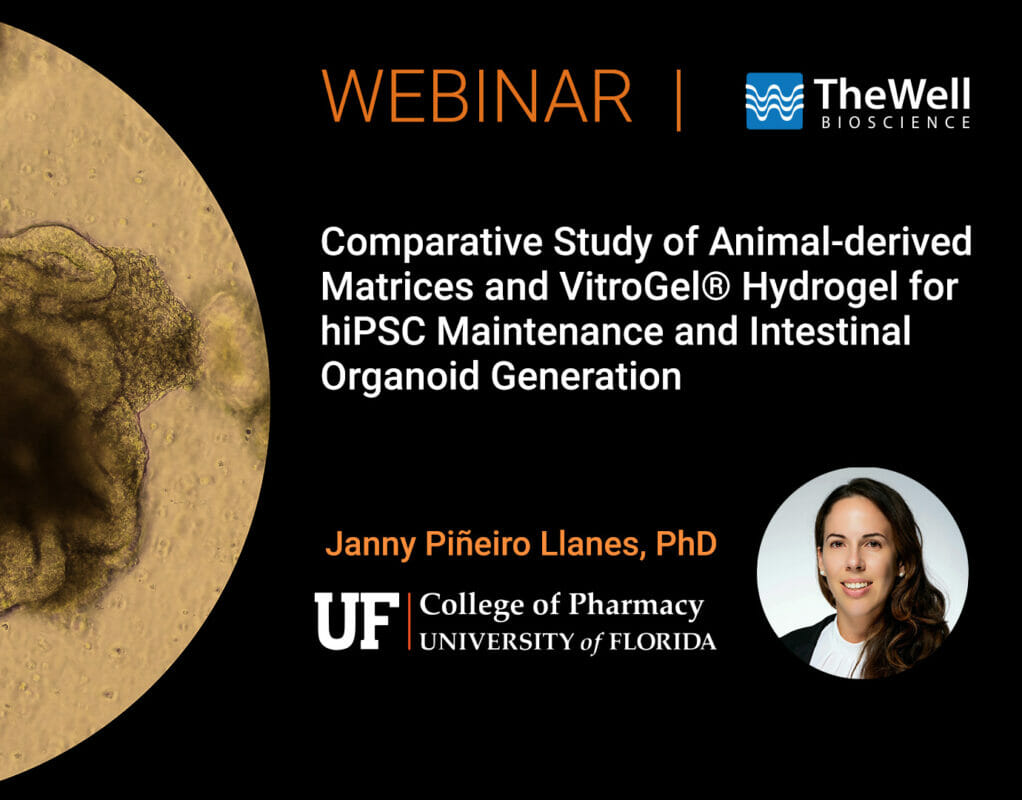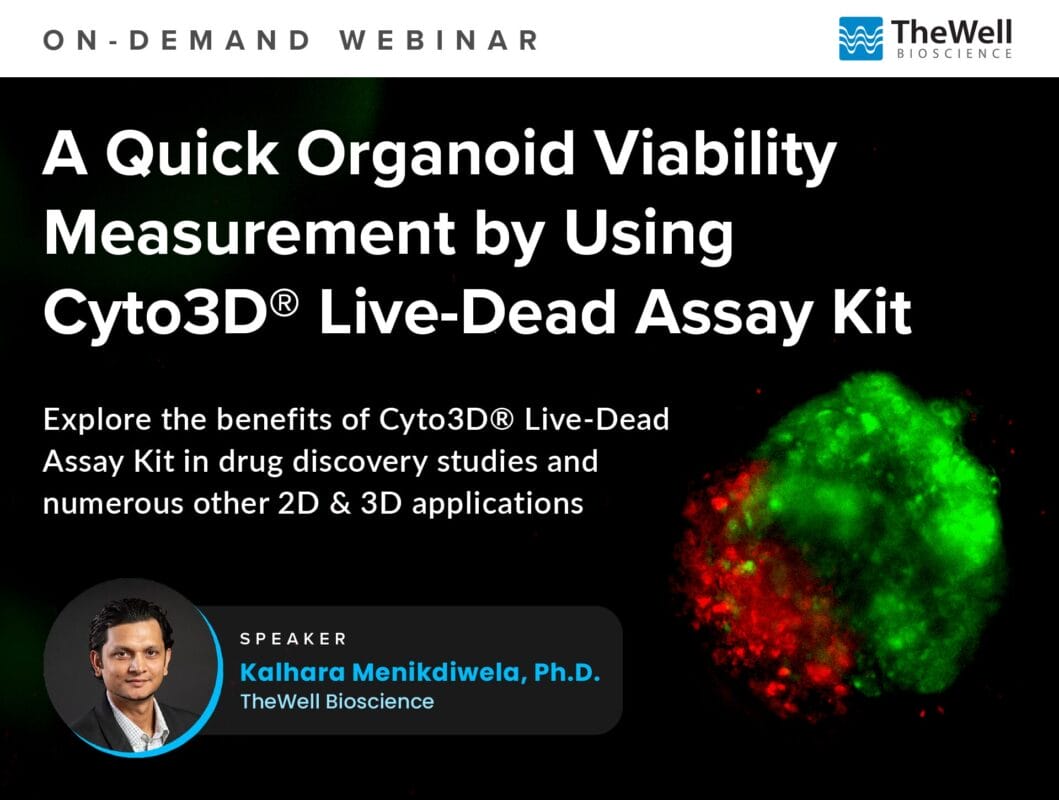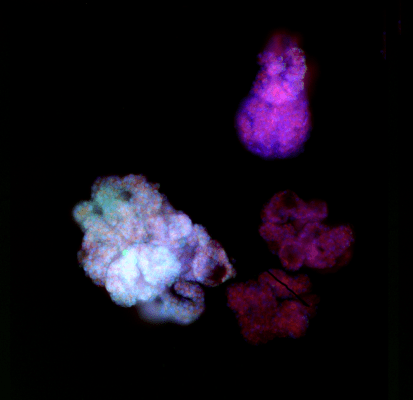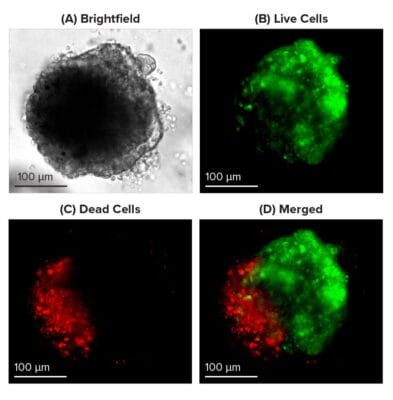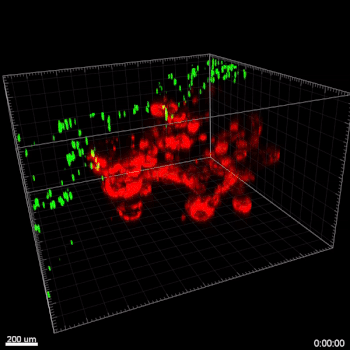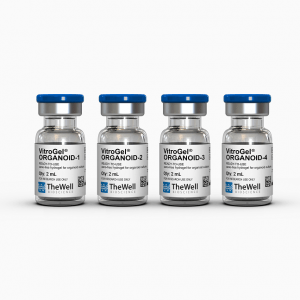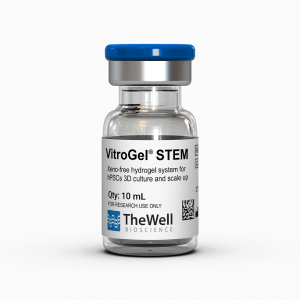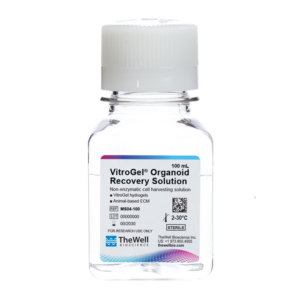Organoids: A Versatile Tool in Biomedical Research
Organoids are self-organizing tissue cultures derived from stem cells or tissue-specific cells, mimicking the structure and function of real organs. These in vitro models have become vital tools for studying development, disease, drug discovery, and personalized medicine. They can be created from various cell types, such as pluripotent stem cells (PSCs) or adult tissue cells, enabling researchers to replicate complex organ-specific traits in a controlled setting. By closely resembling organ biology, organoids offer a more physiologically relevant alternative to traditional 2D cell cultures and animal models, providing patient-specific insights. As the field progresses, improving culture techniques and addressing challenges like reproducibility and scalability will be key to unlocking their full potential in biomedical research and therapy.
Limitations of animal-based ECM in Organoid Applications
- Reproducibility Issues: Undefined composition leads to batch-to-batch variability and inconsistent results.
- Limited Scalability: The lack of tunability and compatibility with automation further restricts the ability to scale organoid applications for industrial and biomedical purposes.
- Ethical and Regulatory Challenges: risk of xeno-contamination makes them unsuitable for translational and therapeutic use.
VitroGel® ORGANOID: Shaping the Future of Organoid Biomedical Applications
A revolutionary hydrogel-based scale-up system for excellent organoid formation
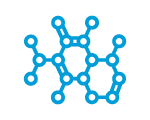
Xeno-free
100% synthetic. Animal & human origin-free, biofunctional hydrogel for organoid formation.
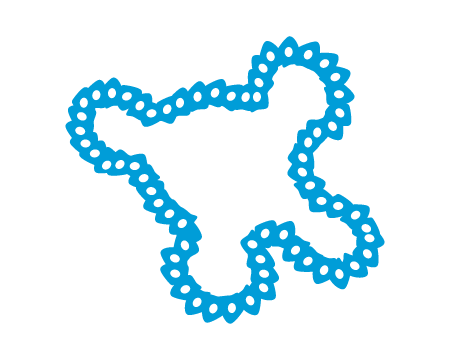
Multiple organoid types
Supports a wide range of organoids from patient-derived samples, stem cells, tissues, co-culture and PDX resources.

Supports apical-out organoid
Naturally supports apical-out organoids and enables long-term organoid culturing

Easy cell harvesting
Easy and efficient cell harvesting by either centrifuge or the non-enzymatic VitroGel® Organoid Recovery Solution.

Room temperature stable
Simple, fast, and easy-to-use. Room temperature protocol/operation. No ice bucket

Lab automation-friendly
Room temperature stable for easy
pipetting. Ideal for automation
and high-content screening
Establish 3D Models
VitroGel® ORGANOID (1-4) are ready-to-use, xeno-free (animal origin-free) hydrogels that support the growth of patient-derived organoids or organoids developed from pluripotent stem cells (PSCs), co-culture, and PDX model.
Cell/Organoid Recovery
VitroGel® Organoid Recovery Solution is a non-enzymatic cell/organoid harvesting solution for quick and efficient recovery of 3D cells or organoids cultured with either VitroGel® hydrogels or an animal-based ECM.
Downstream Analysis
The Cyto3D® Live-Dead Assay Kit is a quick one-step staining procedure for analysis on a dual-fluorescence systemand versatile live/dead assay for 3D and 2D Cell Culture, Organoids, Spheroids, Stem Cells, and Fluorescence Microscopy.
Versatile Culture Methods with VitroGel® ORGANOID
VitroGel® ORGANOID provides flexible options for culturing organoids, supporting a variety of methods to suit diverse research needs. It can be used for 3D cell encapsulation, 2D hydrogel coating, or creating hydrogel droplets for organoid growth. Additionally, VitroGel® can adapt to classical dome methods while also enabling whole-well culture setups, offering researchers unparalleled versatility and ease of use in organoid culture systems.
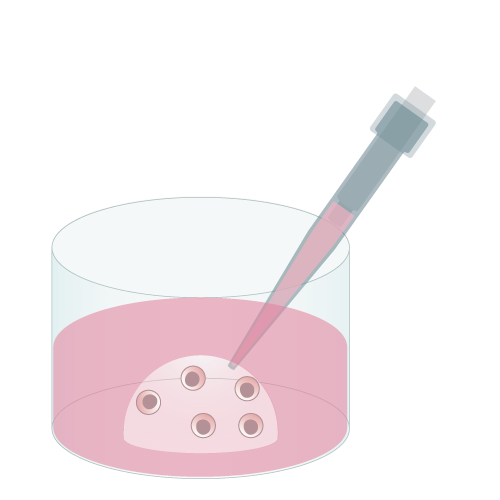
3D Dome
Method
Widely used method for organoid generation.
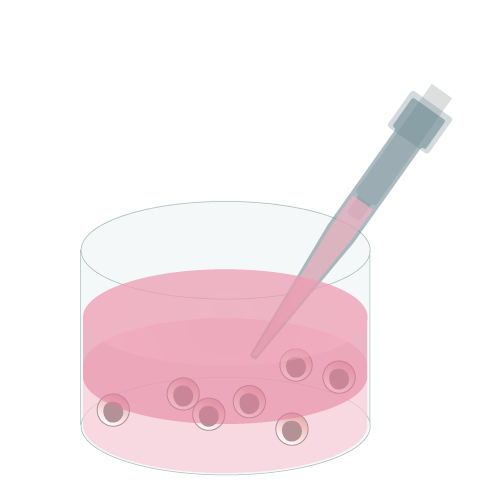
3D Cell Encapsulation Method
Encapsulate cells within the hydrogel for excellent mechanical support and the cell-matrix interactions.
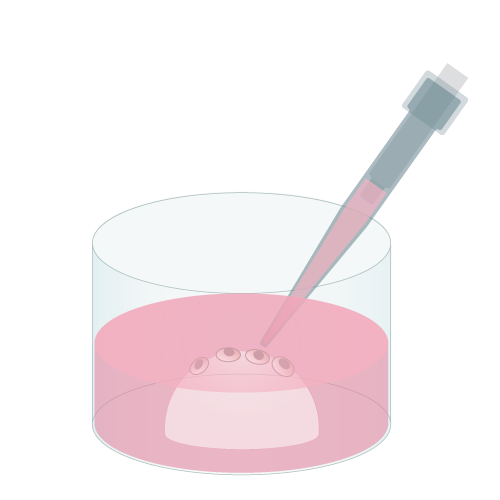
2D Hydrogel Coating Method
Add cells on top of hydrogel for optimal interactions among cells, hydrogel, and medium.
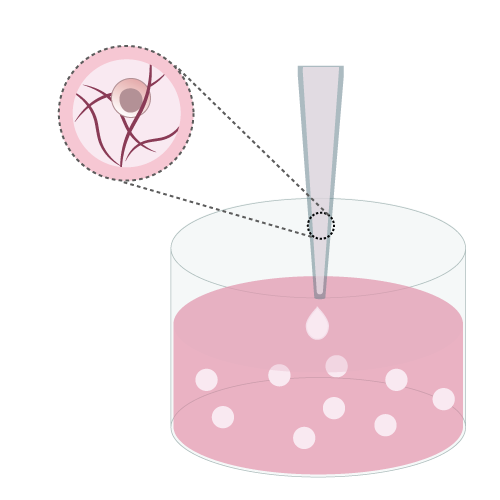
3D Hydrogel-Cell Droplet Method
Create a Hydrogel-Cell droplet. This is a unique culture method only to the VitroGel® system for generating great cell-matrix interactions.
Patient-Derived Organoid/Tumoroid & Tissue Explant (Ex-vivo)
VitroGel® ORGANOID provides an optimal xeno-free environment for long-term culture, preserving the phenotypical properties of patient-derived organoids, tumoroids, and ex vivo tissue explants for weeks or even months. This enables reliable disease modeling, personalized medicine, and drug screening with high reproducibility.
Breast Tissue
A novel preclinical model of the
normal human breast
VitroGel® helps to maintain viable organotypic breast tissue cultures over 7 days without losing phenotype properties. Tissue maintains expression of estrogen and progesterone receptors and remains responsive to hormones.
Lymphoid Tissue
Development of patient-derived lymphomoids with preserved tumor architecture for lymphoma therapy screening
VitroGel® contributed significantly to the results by ensuring that the tissue fragments retained their histological and molecular features, allowing for effective testing of various clinically approved drugs.
Colorectal Tissue
Harnessing Patient-Derived Organoids to Decode Immunotherapy Responses in Colorectal Cancer
VitroGel® revolutionizes colorectal cancer research by creating a xeno-free platform for patient-derived organoids, enabling groundbreaking insights into tumor-immune interactions and immunotherapy responses.
iPSC-Derived Organoid
Designed to support both 2D maintenance and 3D scale-up, VitroGel® ORGANOID offers a complete xeno-free culture platform for iPSC-derived organoids. By providing a physiologically relevant matrix, it facilitates efficient differentiation, expansion, and tissue maturation, opening new possibilities of iPSC-derived organoids for tissue regeneration and regenerative medicine.
Intestinal Organoid Generation on animal-derived ECM vs. Xeno-Free VitroGel®
VitroGel® ORGANOID, Matrigel® and Cultrex® equally facilitate the maturation of intestinal organoids. V-ORG-3 leads to larger and more mature hIO suggesting that the physical properties of xeno-free hydrogels can be harnessed to optimize organoid generation using these systems.
Xeno-free Organoid Generation Workflow for Stem Cell Spheroids Using VitroGel® STEM and VitroGel® ORGANOID Hydrogel System
VitroGel® ORGANOID is also able to effectively promote further organoid growth and development, allowing for long-term, high-quality cultures of these organoids. VitroGel® STEM and VitroGel® ORGANOID effectively streamline the organoid differentiation process, increasing the ease of generating organoids for a variety of applications.
Organoid Co-culture
VitroGel® ORGANOID enables seamless co-culture of organoids with immune cells, supporting immune cell penetration and interaction with organoids/tissue fragments within the matrix. Its optically clear matrix allows for high-resolution imaging and live-cell analysis, making it an ideal platform for studying tumor-immune interactions, immunotherapy applications, and host-microbiome interactions in a physiologically relevant 3D environment.
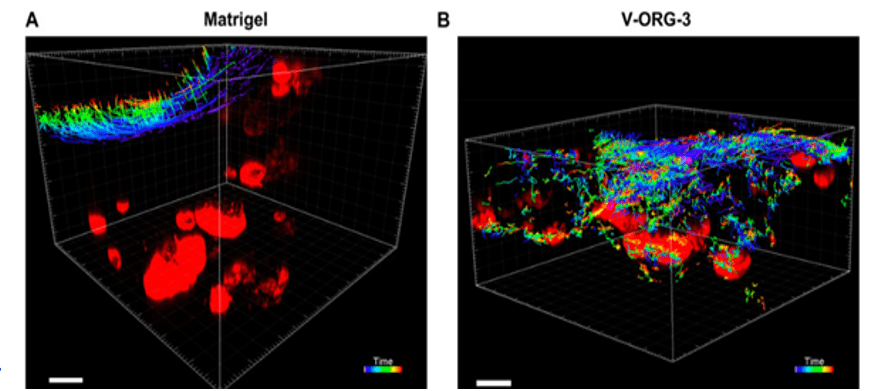
Establishing the First Co-Culture Model of Human Gastric Organoids and Dendritic Cells Using the Xeno-free VitroGel® ORGANOID Hydrogel System
DC migratory activity in Matrigel vs. VitroGel® ORG-3
Poor movement of MoDCs (green) when co-cultured with and HGOs (red) embedded in Matrigel. Improved migration of MoDCs (green) towards HGOs (red) embedded in V-ORG-3.
3D Organoids and Talniflumate: A Powerful Duo Against Pancreatic Cancer
In vitro recognition platform between Telomerase specific T cells and 3D-pancreatic cancer cultures from 13 KC and KPC06 mouse model. T cells are stained with CMPTX (red) and Caspase 3/7 activity is shown in green.
Apical-out Structure
VitroGel® ORGANOID enables seamless co-culture of organoids with immune cells, supporting immune cell penetration and interaction with organoids/tissue fragments within the matrix. Its optically clear matrix allows for high-resolution imaging and live-cell analysis, making it an ideal platform for studying tumor-immune interactions, immunotherapy applications, and host-microbiome interactions in a physiologically relevant 3D environment.
VitroGel® ORGANOID supports apical-out polarity of organoid, in contrast to the apical-in polarity observed in animal-based hydrogels.
Organoids cultured in VitroGel® exhibit apical-out polarity, in contrast to the apical-in polarity observed in animal-based hydrogels. Furthermore, organoids cultured in VitroGel® demonstrated stable and controlled growth over time, unlike the fast uncontrolled organoid growth (recapitulating growth patterns similar to tumors) commonly seen in animal-based hydrogels.
Long-term (60+ days) organoid culture with xeno-free VitroGel® ORGANOID. VitroGel® ORGANOID supports the development of intestinal organoids while maintaining structural and morphological integrity for over 60 days.
Mature long-term organoid culture support with xeno-free VitroGel® system:
- ZO-1 (green) – Highly expressed in epithelial cells, serving as an apical locator.
- β-catenin (red) – Marks the basal side of the cell membrane.
- DAPI (blue) – Stains cell nuclei for clear visualization.
Viability Testing of Organoids
The Cyto3D® Live-Dead Assay Kit offers a quick and simple one-step staining procedure that accurately determines cell viability in both 3D and 2D cell cultures, making it highly versatile for various research applications. Its ability to provide even staining with clear resolution and no background interference enhances imaging quality and experimental precision, particularly for organoids, spheroids, and stem cells.
A Quick Organoid Viability Measurement by Using Cyto3D® Live-Dead Assay Kit
Live-dead cell viability images: Intestinal organoids stained with Cyto3D® Live-Dead Assay Kit. A bright field image of a mature intestinal organoid. Images show live cells (B: Green) and dead cells (C: Red) in a mature intestinal organoid.
Use of Cyto3D® Live-Dead Assay Kit to test cell viability in 3D cultured Patient Derived Organoids (PDOs)/ovarian tumors.
Functions of circRAD23B in patient-derived organoids (PDOs). Effects of 40 µM carboplatin pressure on PDOs for 48 hours and organoids stained with Cyto3D® reagent indicate cell viability/death; live cells are green, while dead cells are red.
Advancing Borderline Ovarian Tumor Research: Precision Viability Assessment in Patient-Derived Organoid Model
Cyto3D® Live-Dead Assay Kit enables the assessment of viability in patient-derived borderline ovarian tumor organoids for the evaluation of novel therapeutic compounds.
Organoid Resources
Webinars
Application Notes and White Papers
Research Highlights
Organoids FAQ
Adding hydrogel as a dome may face the gel floating issue. Therefore, we don’t recommend the dome method; however, some customers still want to adopt the dome method. At this point, the non-tissue culture-treated plate can hold the dome better than TC-Plate with some tips. You may need to add the dome as soon as you mix the gel and cells. Also, warming up the medium can help a little (slow down the gel formation’s speed).
However, the dome method is not 100% successful with non-TC plates, and some scientists really have a hard time with it. That is why we recommend covering the whole bottom of the well with our hydrogel. We usually use a 48 or 96-well plate (about 100-150 uL per well of a 48-well plate or 50 uL per 96-well plate). For the full bottom coverage, the TC plate is better. Alternatively, you could coat the plate with 0.1-0.5% gelatin for 10 minutes and then remove the gelatin before adding the hydrogel.
For the dome method,
- The non-tissue culture-treated plate works better for hydrogel to hold the dome shape (25 uL hydrogel in each well of the 24-well plate).
- However, if you use the hydrogel the cover the whole bottom of the well plate, the tissue culture-treated plate helps the hydrogel to spread and cover the whole bottom of the well plate (sealing the edge of the bottom and wall of each well better), which can help to hold the hydrogel at the bottom of the well plate.
- Alternatively, you could coat the plate with 0.1-0.5% gelatin for 10 minutes and then remove the gelatin before adding the hydrogel.
Because there is a wide range of organoid cell resources from stem cells, patient-derived tissue, co-culture, and PDX, it is hard to tell which organoid hydrogel would perform the best for the researcher’s experiment. Therefore, the VitroGel® ORGANOID Discovery Kit helps researchers screen the four different formulations to determine the best organoid hydrogel version for your organoid conditions.
The VitroGel® ORGANOID Discovery Kit includes the four different formulation types of VitroGel® ORGANOID hydrogels in 2mL :
- VitroGel® ORGANOID 1
- VitroGel® ORGANOID 2
- VitroGel® ORGANOID 3
- VItroGel® ORGANOID 4
Each of the four types has various bio-functional ligands, mechanical strengths, and degradability to fulfill the needs of different organoid culture conditions. From our findings, versions 1, 2, or 3 are suitable for gastric organoids. Versions 1 or 3 are suitable for lung organoids. Versions 2 or 3 are suitable for brain organoids, and versions 3 or 4 are suitable for cancer organoids. By saying that, we still suggest using the Discovery Kit to screen the optimal hydrogel for your organoid conditions quickly.
The VitroGel® ORGANOID has four different versions, each formulated with various biofunctional ligands, mechanical strengths, and degradability to fulfill the needs of different organoid culture conditions.
The VitroGel® ORGANOID-3 would be a good starting point as many researchers get good results on this hydrogel for their organoid culture.
Publications
- Arthurs, A. L., Dietrich, B., Knöfler, M., Lushington, C. J., Thomas, P. Q., Fatwa Adikusuma, Williamson, J. M., Babikha, S., Tyla Damhuis, Jankovic-Karasoulos, T., Smith, M. D., Pringle, K. G., & Roberts, C. T. (2025). Genetically edited human placental organoids cast new light on the role of ACE2. Cell Death and Disease, 16(1). https://doi.org/10.1038/s41419-025-07400-x
- Nikeghbal, P., Burke, D., Armijo, D., Aldarondo-Quinones, S., Lidke, D. S., & Steinkamp, M. P. (2025). The Influence of Macrophages within the Tumor Microenvironment on Ovarian Cancer Growth and Response to Therapies. https://doi.org/10.1101/2025.01.29.635532
- Carbone, C., Luca, R. D., Puca, E., Agostini, A., Caggiano, A., Priori, L., Esposito, A., Ascrizzi, S., Piro, G., Salvatore, L., Sanctis, F. D., Stefano Ugel, Corbo, V., Neri, D., & Tortora, G. (2025). Antibody-based delivery of interleukin-2 modulates the immunosuppressive tumor microenvironment and achieves cure in pancreatic ductal adenocarcinoma syngeneic mice. Journal of Experimental & Clinical Cancer Research, 44(1). https://doi.org/10.1186/s13046-024-03238-x
- Dini, A., Barker, H., Piki, E., Sharma, S., Raivola, J., Murumägi, A., & Ungureanu, D. (2024). A multiplex single-cell RNA-Seq pharmacotranscriptomics pipeline for drug discovery. Nature Chemical Biology. https://doi.org/10.1038/s41589-024-01761-8
- Piki, E., Dini, A., Rantanen, F., Bentz, F., Lassi Paavolainen, Barker, H., Juuli Raivola, Hirasawa, A., Olli Kallioniemi, Murumägi, A., & Ungureanu, D. (2024). Molecular and functional profiling of primary normal ovarian cells defines insights into cancer development and drug-responses. Molecular Therapy Oncology, 32(4), 200903–200903. https://doi.org/10.1016/j.omton.2024.200903
- Lee, C. H., Chang, M. H., Koh, Y. H., Pack, S. P., Seo, M., Cha, H., & Lee, J. H. (2024). Mechanistic insight into airborne particulate matter PM10 as an environmental hazard for hemorrhagic stroke: Evidence from in vitro and in vivo studies. Journal of Hazardous Materials, 480, 136319–136319. https://doi.org/10.1016/j.jhazmat.2024.136319
- Morelli, M., Lessi, F., Franceschi, S., Ferri, G., Giacomarra, M., Menicagli, M., Gambacciani, C., Pieri, F., Pasqualetti, F., Montemurro, N., Paolo Aretini, Orazio Santo Santonocito, Luisa, A., & Chiara Maria Mazzanti. (2024). Exploring Regorafenib Responsiveness and Uncovering Molecular Mechanisms in Recurrent Glioblastoma Tumors through Longitudinal In Vitro Sampling. Cells, 13(6), 487–487. https://doi.org/10.3390/cells13060487
- Costa, A. F., Senra, E., Campos, D., Faria-Ramos, I., Santos-Ferreira, L., Lamas, S., Gomes, J., Pinto, F., Teixeira, A., Abrantes, R., Duarte, H. O., Pacheco, M., Pinto, M. T., Maia, A. F., António Pombinho, Barros, R., Fernandes, V., Casanova-Gonçalves, F., Sousa, F., & Barbosa, J. (2024). Monensin as potential drug for treatment of SLeX-positive tumors. MedRxiv (Cold Spring Harbor Laboratory). https://doi.org/10.1101/2024.03.11.24304048

